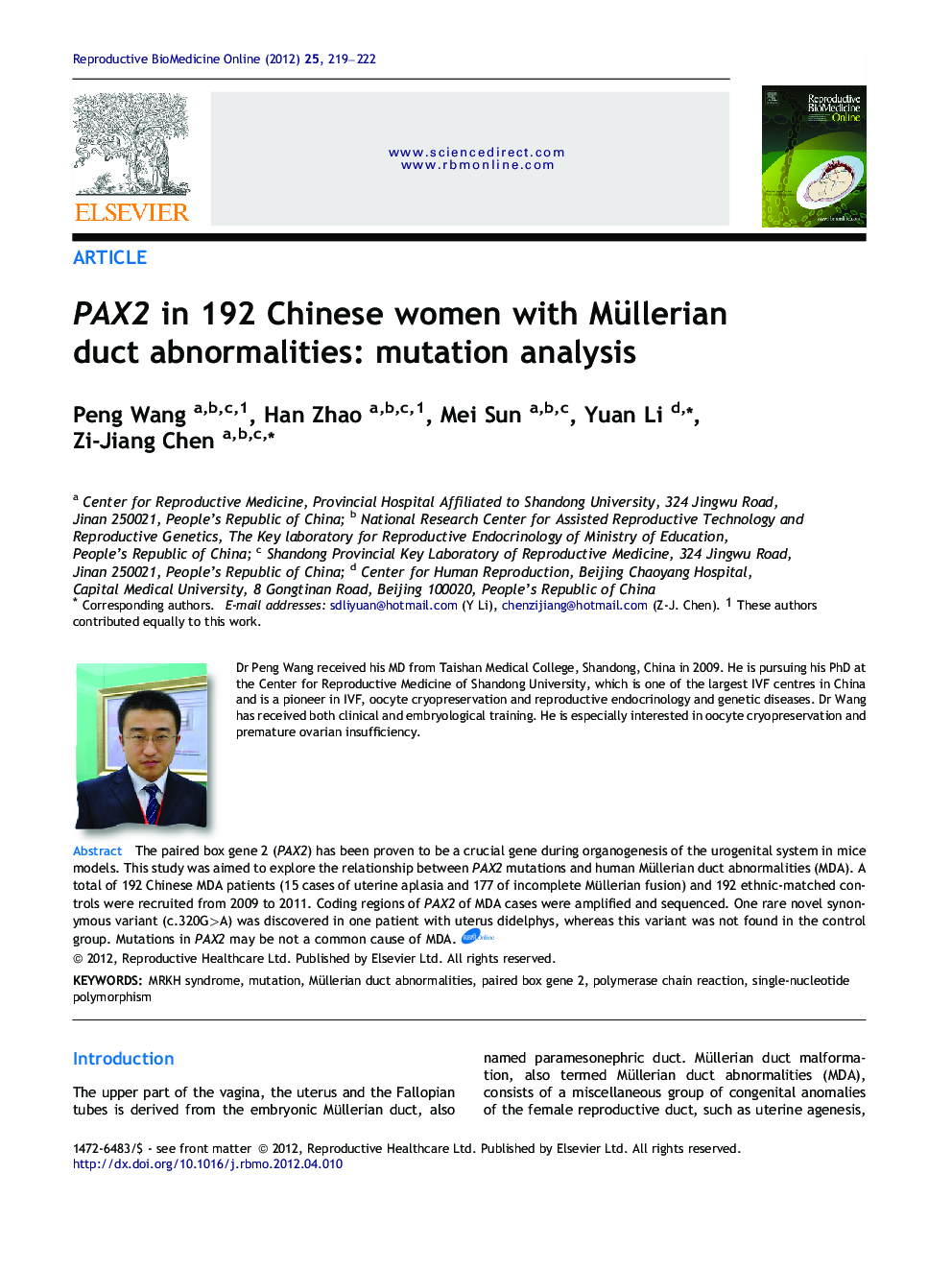| Article ID | Journal | Published Year | Pages | File Type |
|---|---|---|---|---|
| 3970462 | Reproductive BioMedicine Online | 2012 | 4 Pages |
The paired box gene 2 (PAX2) has been proven to be a crucial gene during organogenesis of the urogenital system in mice models. This study was aimed to explore the relationship between PAX2 mutations and human Müllerian duct abnormalities (MDA). A total of 192 Chinese MDA patients (15 cases of uterine aplasia and 177 of incomplete Müllerian fusion) and 192 ethnic-matched controls were recruited from 2009 to 2011. Coding regions of PAX2 of MDA cases were amplified and sequenced. One rare novel synonymous variant (c.320G>A) was discovered in one patient with uterus didelphys, whereas this variant was not found in the control group. Mutations in PAX2 may be not a common cause of MDA.The upper part of the vagina, the uterus and the Fallopian tubes is derived from the embryonic Müllerian duct. Müllerian duct malformation consists of a miscellaneous group of congenital anomalies of the female reproductive duct. To date, researchers have done a large amount of work to define the aetiology of this malformation; however, it remains a mystery. Paired box gene 2 (PAX2) has been proven to be a crucial gene during organogenesis of the urogenital system in mice models. This study was aimed to explore the relationship between PAX2 mutations and human Müllerian duct abnormalities (MDA). A total of 192 Chinese MDA patients (15 cases of uterine aplasia and 177 of incomplete Müllerian fusion) and 192 ethnic-matched controls were recruited from 2009 to 2011. Coding regions of PAX2 were amplified and sequenced. One rare novel synonymous variant (c.320G>A) was discovered in one patient with uterus didelphys, whereas this variant was not found in the control group. In the Han Chinese population, mutations in PAX2 may be not a common cause of MDAs.
